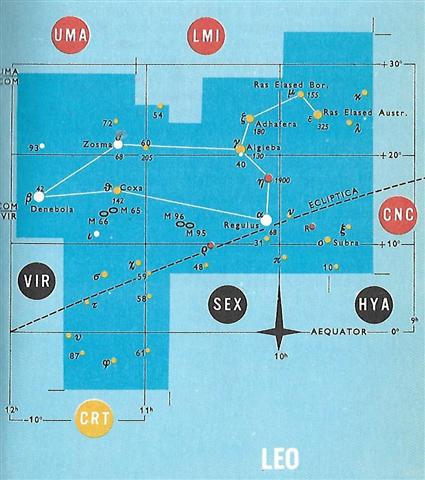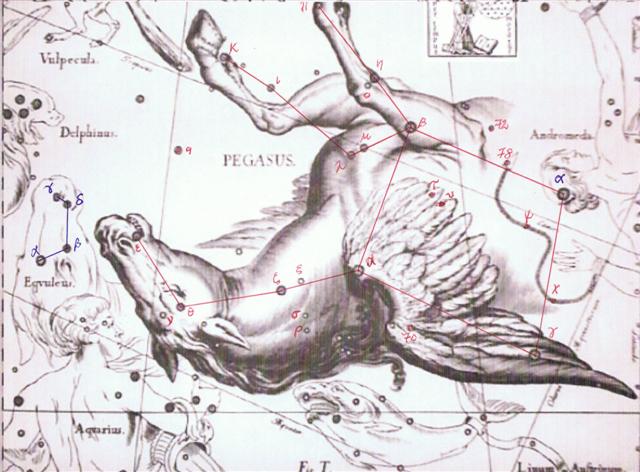379. The cycle of Mercury
was approximately 115 days long and Ga5-5 (115) should therefore be a place for
regeneration a new growth, Wachstum:
... Ganz ähnlich is der Name
'Gott von Duazag' des Gottes Nabū ... zu erklären.
Er
bezeichnet ihn als den Gott des Wachtstums, welches als aus dem
Osten stammend betrachtet wird, weil die Sonne, die das Wachstum
bringt, im Osten aufgeht.
Dass aber Nabū als Ost-Gott aufgefasst wurde, hängt damit
zusammen,
dass sein Stern, der Mercur, nur
im Osten oder Westen sichtbar ist ...
...
... Later
on in this series of rituals, the Chorti go
through a ceremony they call raising the sky. This
ritual takes place at midnight on the twenty-fifth of
April [day 115] and continues each night until the rains
arrive. In this ceremony two diviners and their wives sit on
benches so that they occupy the corner positions of the cosmic
square. They take their seats in the same order as the stones
were placed, with the men on the eastern side and the women on
the west. The ritual actions of sitting down and lifting upward
are done with great precision and care, because they are
directly related to the actions done by the gods at Creation.
The people represent the gods of the four corners and the clouds
that cover the earth. As they rise from their seats, they
metaphorically lift the sky. If their lifting motion is uneven,
the rains will be irregular and harmful
...
|
CLOSE TO THE SUN: |
|
6-25 |
6-26 |
6-27 |
6-28 (*99) |
6-29 (180) |
|
JULY 10 |
11 |
12 (193) |
13 |
14 (*115) |
 |
 |
 |
 |
 |
|
Ga5-1 |
Ga5-2 |
Ga5-3 |
Ga5-4 |
Ga5-5 (115) |
|
θ Crateris
(175.0), υ Leonis (175.2), ω Virginis (175.3), ι
Crateris (175.5) |
ο Hydrae
(176.1) |
ζ Crateris,
ξ Virginis (177.0), λ Muscae (177.1), ν Virginis
(177.2), μ Muscae (177.8) |
Al Sarfah-10 (Turn) /
Uttara Phalguni-12 (Second Reddish One) /
Zibbat A.-16 (Tail of the Lion) / Shēpu-arkū sha-A-17
(Hind Leg of the Lion)
93 Leonis
(178.0),
DENEBOLA = β Leonis
(178.3),
ALARAPH (Unarmed) = β Virginis
(178.6) |
PHEKDA ('Thigh') =
γ
Ursae Majoris,
β
Hydrae (179.3),
η
Crateris (179.9)
DENEB CYGNI (α
Cygni)
|
 |
|
Sept 12 |
13 |
14 (*177) |
15 |
16 (259) |
|
°Sept 8 |
9 (*172) |
10 |
11 (254) |
12 |
|
'Aug 16 |
17 (229) |
18 (*150) |
19 |
20 |
|
"Aug 2 (214) |
3 |
4 (*136) |
5 |
6 |
|
CLOSE TO THE FULL
MOON: |
|
(359 = 84 + 275) |
12-26 |
12-27 |
12-28 |
12-29 (363) |
|
JAN 9 |
10 (*295) |
11 |
12 |
13 (378 =
363 + 15) |
|
λ Piscium
(358.0),
MANUS
CATENATA (Chained Hand) = ι Andromedae
(358.1),
ALRAI
(Shepherd) = γ Cephei,
θ Phoenicis (358.4), κ Andromedae (358.7)
*317 =
*358.4 - *41.4 |
ω Aquarii
(359.2),
78 Pegasi
(359.5) |
ψ Andromedae
(360.1), σ Phoenicis (360.4)
*319 =
*360.4 - *41.4 |
γ¹ Oct.
(361.4), φ Pegasi (361.7)
*320 =
*361.4 - *41.4 |
DZANEB
(Tail) = ω Piscium
(362.4), γ² Oct. (362.8)
*321 =
*362.4 - *41.4 |
 |
|
3-14 (438) |
March 15 |
16 (*360) |
17 |
18 (77) |
|
°March 10
(434) |
11 (*355) |
12 |
13 |
π (73) |
|
'Febr 15
(411) |
16 (*332) |
17 |
18 |
19 (50) |
|
"Febr 1 |
2 (*318) |
3 |
4 (400) |
5 (36) |
78 Pegasi (*359 → 84 + 275) was 181 days later
than
93 Leonis (*178 → 6 * 29½ + 1), and here there was a
conjunction between the Lion and the Virgin:
|
Zibbat A. |
Tail of the
Lion |
β (Denebola)
Leonis
|
178.3 |
Sept 15
(258) |
|
Shēpu-arkū
sha-A |
Hind Leg of
the Lion |
β (Alaraph)
Virginis |
178.6 |
Sept 15
(258) |

3 days of cold food, I have guessed, could have
corresponded to December 28-30:
... The 5th day after the
winter solstice was day 355 (December 21) + 5 = 360 (December
26) and this could have been perceived as the end of the Sun
circuit. 355 - 80 (0h) = *275. However, the Julian equinox was
day 84 (= 80 + 4) and then also the day for the winter solstice
should have come 4 days later, viz. in December 25 (359 = 355 +
4), which meant the end of the Sun cycle could have come in day
360 + 4 = 364 = 84 + 280 (= 12 weeks + 40 weeks). The new fire
would then be alighted in day 365 = 359 + 6 and cold food could
have been served in December 28-30 ...
And these 3 days could reasonably have represented the
last 3 days before Sirrah, viz. when the Full Moon was on her way to
the astronomically true equinox:
|
CLOSE TO THE SUN: |
|
6-30 (*101 →
Sirius) |
7-1 |
7-2 |
7-3 (184) |
|
JULY 15 |
16 |
17 (*118 = 4
* 29½) |
18 (199) |
 |
 |
 |
 |
|
Ga5-6 |
Ga5-7 |
Ga5-8 (118) |
Ga5-9 |
|
no star
listed (180) |
π Virginis
(181.0), θ Crucis (181.5) |
12h (182.6)
ο Virginis
(182.1), η Crucis (182.5) |
ALCHITA = α
Corvi, MA WEI (Tail of the Horse) = δ Centauri
(183.1),
MINKAR = ε
Corvi
(183.7), ρ
Centauri (183.9) |
|
Sept 17
(260) |
18 (*181) |
19 |
20 |
|
°Sept 13 |
14 (*177) |
15 |
16 |
|
'Aug 21 |
22 |
23 |
24 (236) |
|
"Aug 7 |
8 |
9 |
10 (222) |
|
CLOSE TO THE FULL
MOON: |
|
12-30 (364) |
12-31 (*285) |
1-1 |
1-2 |
|
JAN 14 |
15 (380 =
365 + 15) |
16 (*301) |
17 |
|
η Tucanae (363.0), ψ Pegasi
(363.1),
32 Piscium
(363.2), π Phoenicis
(363.4), ε Tucanae (363.6), τ Phoenicis
(363.9)
*322 =
*363.4 - *41.4 |
θ Oct. (364.4)
*323 =
*364.4 - *41.4 |
Al Fargh al Thāni-25 (Rear Spout)
0h (365.25)
CAPH (Hand) = β
Cassiopeiae,
SIRRAH (Navel of the Horse)
= α Andromedae (0.5),
ε Phoenicis, γ³ Oct. (0.8) |
Uttara
Bhādrapadā-27
/
Wall-14
ο Oct.
(1.3),
ALGENIB
PEGASI = γ Pegasi
(1.8) |
|
... Ecclesiastically, the equinox is reckoned to be on
21 March (even though the equinox occurs, astronomically
speaking, on 20 March in most years) ...
32 Piscium -
93 Leonis = *363 - *178 = *185 = 78 Pegasi - 93 Leonis +
4. |
|
March 19 |
20 (79) |
Gregorian
equinox |
22 (*366) |
|
°March 15 |
16 (*360) |
17 |
18 (77) |
|
'Febr 20
(*336) |
21 |
22 (53) |
TERMINALIA |
|
"Febr 6 |
7 (403) |
8 (*324) |
9 (40) |
|
... On
February 9 the Chorti Ah K'in, 'diviners', begin
the agricultural year. Both the 260-day cycle and the
solar year are used in setting dates for religious and
agricultural ceremonies, especially when those rituals
fall at the same time in both calendars. The ceremony
begins when the diviners go to a sacred spring where
they choose five stones with the proper shape and color.
These stones will mark the five positions of the sacred
cosmogram created by the ritual. When the stones are
brought back to the ceremonial house, two diviners start
the ritual by placing the stones on a table in a careful
pattern that reproduces the schematic of the universe.
At the same time, helpers under the table replace last
year's diagram with the new one. They believe that by
placing the cosmic diagram under the base of God at the
center of the world they demonstrate that God dominates
the universe.
The priests
place the stones in a very particular order. First the
stone that corresponds to the sun in the eastern,
sunrise position of summer solstice is set down; then
the stone corresponding to the western, sunset position
of the same solstice. This is followed by stones
representing the western, sunset position of the winter
solstice, then its eastern, sunrise position. Together
these four stones form a square. They sit at the four
corners of the square just as we saw in the Creation
story from the Classic period and in the Popol Vuh.
Finally, the center stone is placed to form the ancient
five-point sign modern researchers called the quincunx
... |

|










